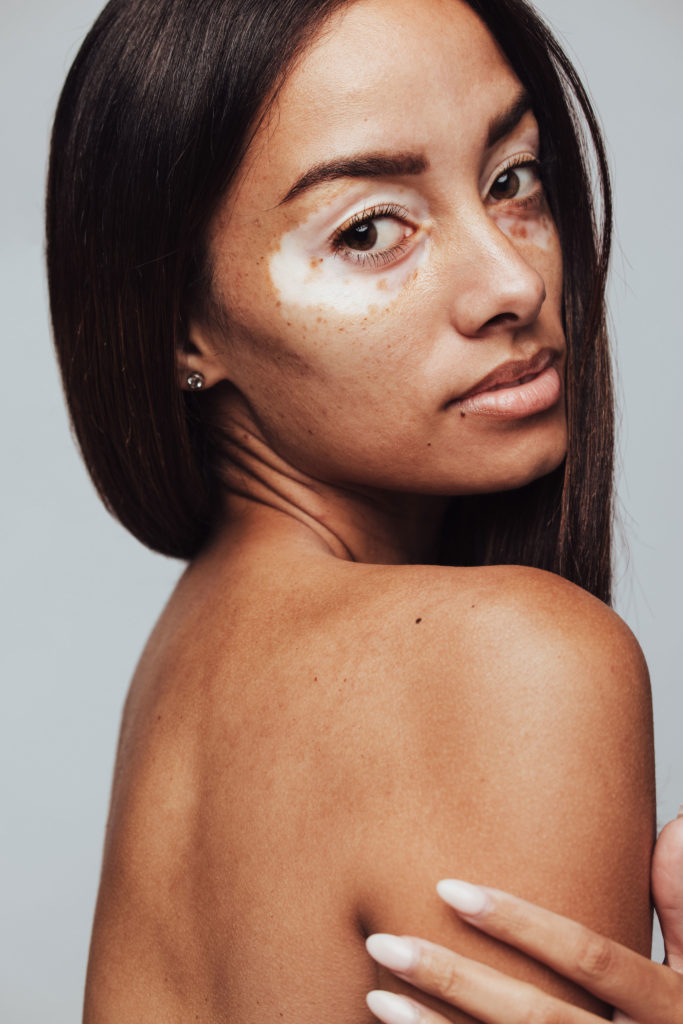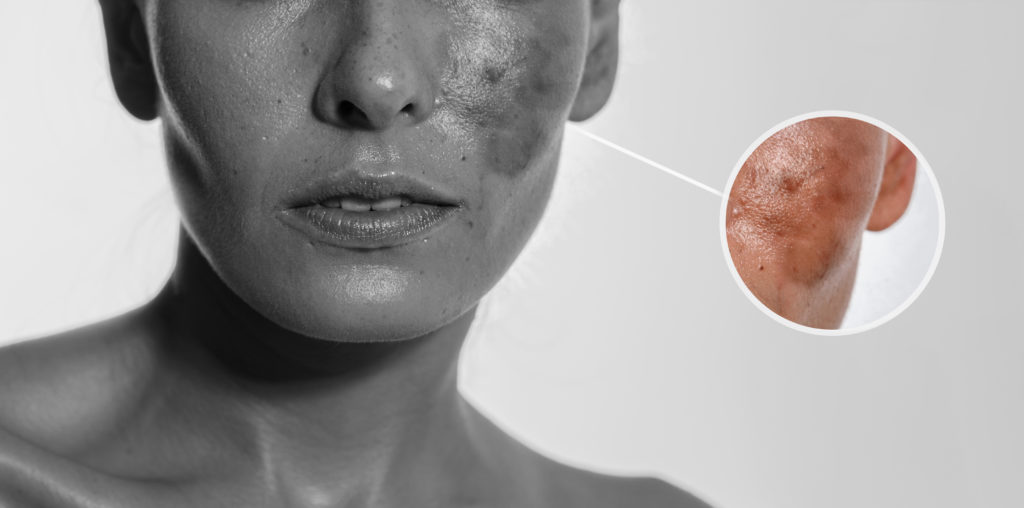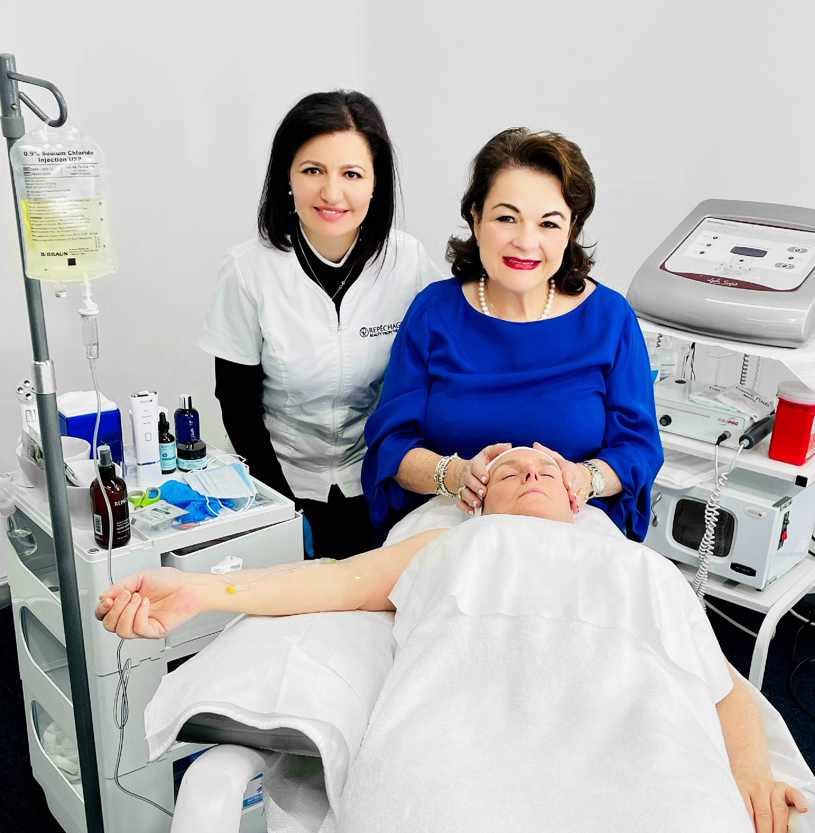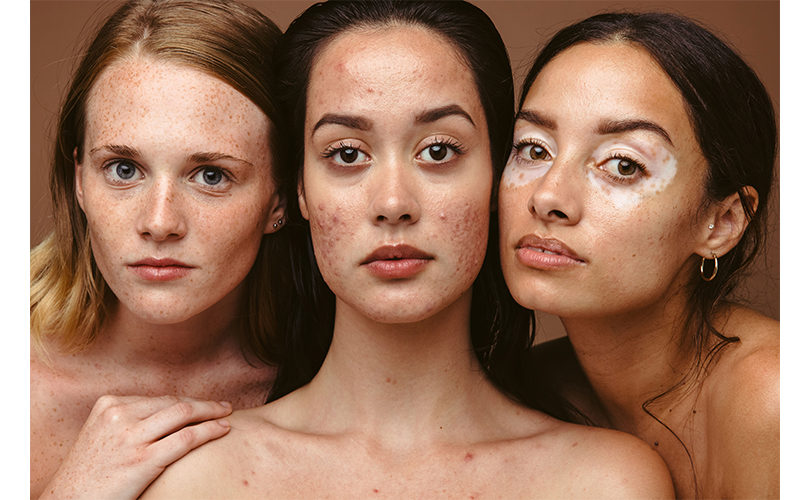September is not just back to school, but back to professional skin care treatments. Many clients may have foregone their monthly or weekly facials, and chances are, their skin is showing it. Sun and environmental damage, manifesting in hyperpigmentation and dull, uneven skin tone increases at this time of year, and many of your clients may be coming in to the spa or salon for help with these concerns. Fortunately, there are many treatments which utilize ingredients such as Glutathione, biomarine technology, peptides and DGA, which you can utilize to help diminish the appearance of dark spots. Here, we’ll give an overview of the different pigmentary concerns your clients may present, as well as skin solutions you can incorporate into your fall menus.
 According to the most recent reports, the global pigmentation disorders treatment market is expected to generate revenue of around USD 8.4 billion by end of 2024. Hyperpigmentation can manifest in many ways, including as melisma and post-inflammatory hyperpigmentation (PIH). It can also manifest as freckles and sun spots, solar lentigines or ephelides or “age spots” as a result of internal and external factors such as hormonal fluctuations and sun damage. Studies have found that hyperpigmentation disorders such as melasma can affect quality of life, self-esteem, physical health and interpersonal relationships.
According to the most recent reports, the global pigmentation disorders treatment market is expected to generate revenue of around USD 8.4 billion by end of 2024. Hyperpigmentation can manifest in many ways, including as melisma and post-inflammatory hyperpigmentation (PIH). It can also manifest as freckles and sun spots, solar lentigines or ephelides or “age spots” as a result of internal and external factors such as hormonal fluctuations and sun damage. Studies have found that hyperpigmentation disorders such as melasma can affect quality of life, self-esteem, physical health and interpersonal relationships.
In the past, traditional treatments, such as hydroquinone and aggressive chemical peels, have potentially worsened the conditions. The newest approaches utilize protocols that address both internal and external causes of the pigmentary disorder, while also helping to improve the appearance of skin after months of intense environmental exposure.
Hyperpigmentation
Certain skin pigmentation disorders are more common in specific Fitzpatrick skin types. Freckling and sun spots, (solar lentigines and ephelides) are more common in Fitzpatrick scale in types I to III, while melasma and PIH is more prevalent in Fitzpatrick scale types IV to VI.
Hyperpigmentation itself is caused by a hyper-proliferation of melanin in the skin.
Melanin is a substance that gives the skin and hair its natural color. Those with darker skin have higher amounts of melanin. By contrast, those with less pigment have lighter or more fair skin coloring. Melanin pigments are formed as part of the process of metabolizing an amino acid called tyrosine. When melanin is formed, the process is called melanogenesis.
In humans, melanogenesis is an increased production of melanin. Hyperpigmentation occurs when an excess of melanin forms deposits in the skin. This is a common, usually harmless condition in which patches of skin become darker in color than the normal surrounding skin. The process is stimulated by DNA damage to the skin induced by UVB radiation.
Stimulated by DNA damage when induced by UVB rays from the sun attacking the keratinocyte of the skin, the keratinocyte then signals the melanocyte to initiate the production of melanin. Once the melanocyte receptors are attacked, it triggers Tyrosinase, endothelium (ET-1) and alpha melanin stimulating hormone to produce melanin. Melanosomes carry melanocytes to the keratinocyte, where they gather to deposit melanin.
There are two forms of melanin: Eumelanin, which is black/brown pigment and Pheomelanin, which is a yellow/red pigment. There are 2 types of hyperpigmentation: Melanocyte hyperactivity which brings about freckles. Melanocyte hyperproliferation causes age spots.
Melasma
This is a form of hyperpigmentation that is characterized by patches of brown pigmentation on the cheeks, jawline, forehead, and upper lip. Sometimes referred to as “the mask of pregnancy,” sun exposure can exacerbate the hyperpigmentation. Rather than being associated with “age spots,” melasma affects a much younger demographic. In one study, about 60% developed melasma before thirty.
The exact causes of melasma are unknown, although some triggering factors include sun exposure, pregnancy, use of oral contraceptives and other steroids, eating certain food items, ovarian tumors, hormone replacement therapy, photosensitizing skin care treatments that trigger inflammatory processes of the skin, and even stressful events.
It is known that melasma occurs in all ethnic and population groups. However, epidemiological studies have reported higher prevalence among Fitzpatrick skin types III-V.
Sun exposure was reported as a triggering factor by 51% of women and as an aggravating factor by 84%. The risk of severe melasma was about three times higher for women with age at onset under 30, phototype V and major lifetime sun exposure and about 8 times higher for women exposed to oral contraceptives.
Because melasma is exacerbated by exposure to UV light, it can appear on any sun-exposed area of the body, but is most commonly found on the face. New research is finding that that while sunlight is known to be a major player in melasma with ultraviolet light being a significant trigger, visible light, particularly low-spectrum blue light, may trigger melasma as well. It is also being hypothesized that melasma may be an inflammatory skin condition, with a vascular component. This increased vascularity causes blood vessel dilation. As opposed to rosacea, this may be caused by mast cells that cause damage to the epidermal-dermal membrane.
Recent research also points to pollution as being a potential factor in melasma development. With this, particulate matter (PM) could produce reactive oxygen species (POS) that leads to hyperpigmentation.

Post Inflammatory Hyperpigmentation:
Post-inflammatory hyperpigmentation (PIH) is a condition in which an injury or inflammation to the skin causes increased pigment production. Darkened pigmentation is often deep red, purple or brown in appearance. PIH is more prevalent in darker-skinned individuals (Fitzpatrick skin types IV through VI) and, like melasma, can be difficult to treat when it involves a deeper skin layer. The most common cause of PIH is acne, but it also can result from psoriasis, a burn, or an injury.
PIH results from the over or irregular production of melanin after skin inflammation. When PIH occurs in the epidermal layer, there is an increase in the production and transfer of melanin to surrounding keratinocytes. Although the exact mechanism is unknown, this rise is stimulated by cytokines and other inflammatory mediators as well as reactive oxygen species (ROS), or free radicals, which are released during the inflammatory process. Like melasma, PIH can worsen when exposed to UV light.
Skin Care Ingredients for Hyperpigmentation:
In the past, dermatologists prescribed hydroquinone to reduce hyperpigmentation, which only caused the formation of white spots. The following ingredients used in skin care treatments and products have been found to be both gentle and beneficial in addressing hyperpigmentation.
Glutathione is a tri-peptide, which is three small amino acids. Internally, it is important to helping metabolize everything in your body. Externally, Oxidized Glutathione, a molecule found naturally within the skin that is known to play an important role in preventing oxidative damage and has been found to help lessen the appearance of uneven skin tone.
Seaweed has been shown to have the greatest bio-affinity to the human body, its chemical makeup close to the elements found in human plasma. Seaweed such as Laminaria Digitata have been found to contain 12 vitamins, 18 amino acids and 42 minerals and trace elements, as well as many important nutrients, including polyunsaturated fatty acids, enzymes and bioactive peptides. Essential fatty acids help maintain the skin’s barrier, and polysaccharides such as Alginic Acid, help to lock moisture into the skin.
Diglucosyl Gallic Acid (DGA) is known to be more potent than Vitamin C and Kojic Acid. This ingredient is also known to help restore a perfect-looking complexion while it helps even the appearance of the skin tone. It is a powerful antioxidant as well as helpful in the purification and detoxification of the skin.
Alpha Arbutin is another known skin brightener, a natural ingredient derived from the leaves of bearberry, cranberry, mulberry or blueberry shrubs, and also is present in most types of pears.
Kojic acid is a potent brightener derived from a by-product in the fermentation process of malting rice for use in the manufacturing of sake, the Japanese rice wine.
Watermelon (Citrullus lanatus) contains phytochemicals such as lycopene, vitamin C, β-carotene, and has a high polyphenol content. The red color of its pulp is due to the presence of lycopene, an antioxidant known to help neutralize free radicals especially responsible for skin aging.

Azelaic acid is a component of grains, such as wheat, rye, and barley, known for its skin brightening ability.
Vitamin C and its various forms of ascorbic acid, has been shown to be an effective skin exfoliant.
Gotu Kola Extract is a plant known in Asia for its beneficial effects that helps to reduce the appearance of visible signs of aging.
Hexapeptide-2 is a fast-acting peptide that helps to brighten the appearance of the skin.
Willow Bark Extract is extracted from the white willow tree (Salix Alba) this ingredient helps with mild exfoliation of dead skin cells to reveal a more youthful complexion.
Licorice Extract is known for helping to brighten the appearance of the skin.
Bellis Daisy is an ingredient derived from the daisy flower that helps to decrease the appearance of age spots.
New Ideas in Treatment:
Traditionally, medical personnel will prescribe topical creams that contain hydroquinone, tretinoin and corticosteroids. Physical treatments include chemical peel, microdermabrasion, dermabrasion, laser treatment, or a light-based procedure.
Improper treatment and maintenance by improperly trained skin care professionals can result in more damage than good. According to Dr. Natalya Fazylova, DNP of ReBalance Integrative Medicine and Anti-Aging Center in NYC, more aggressive treatments, such as lasers, peels and dermabrasion can at first take care of the problem on the outside, but if the client is not instructed on proper maintenance and skin care, and if problem is not addressed internally as well, the problem reoccurs.
The newest approach is to provide services that combine both internal and external treatments to provide the best results. In Dr Fazylova’s clinic, for example, they approach treating hyperpigmentation by addressing hormonal imbalances, administering IV drips such as glutathione in tandem with topical skin care treatments such as the Repêchage Biolight® Miracle Facial with Glyco-Sea® Glycolic Peel. The ReBalance Revitalizing IV Drip Infusions deliver vitamins, nutrients and specific ingredients internally while the topical treatments address skin concerns.

“In today’s busy world, it can be challenging to get all the nutrients you need to build healthy cells, support your metabolism and optimize your collagen building,” says Dr. Fazylova. “Stress, sleep deprivation and environmental toxins take their toll, dulling your skin, causing premature aging and reducing your body’s ability to fight off pathogens. This is why ReBalance Beauty and Wellness Clinic has partnered with Repêchage to offer a unique solution to the problem, combining treatments to improve your complexion from inside out.”
Treating pigmentary disorders has historically shown varied results. Now, utilizing an holistic approach to treatment is showing the best helping to address causes both internally and externally, while providing a safe and relaxing environment.
Want to learn more about solutions for hyperpigmentation? Join me for my Master Class
